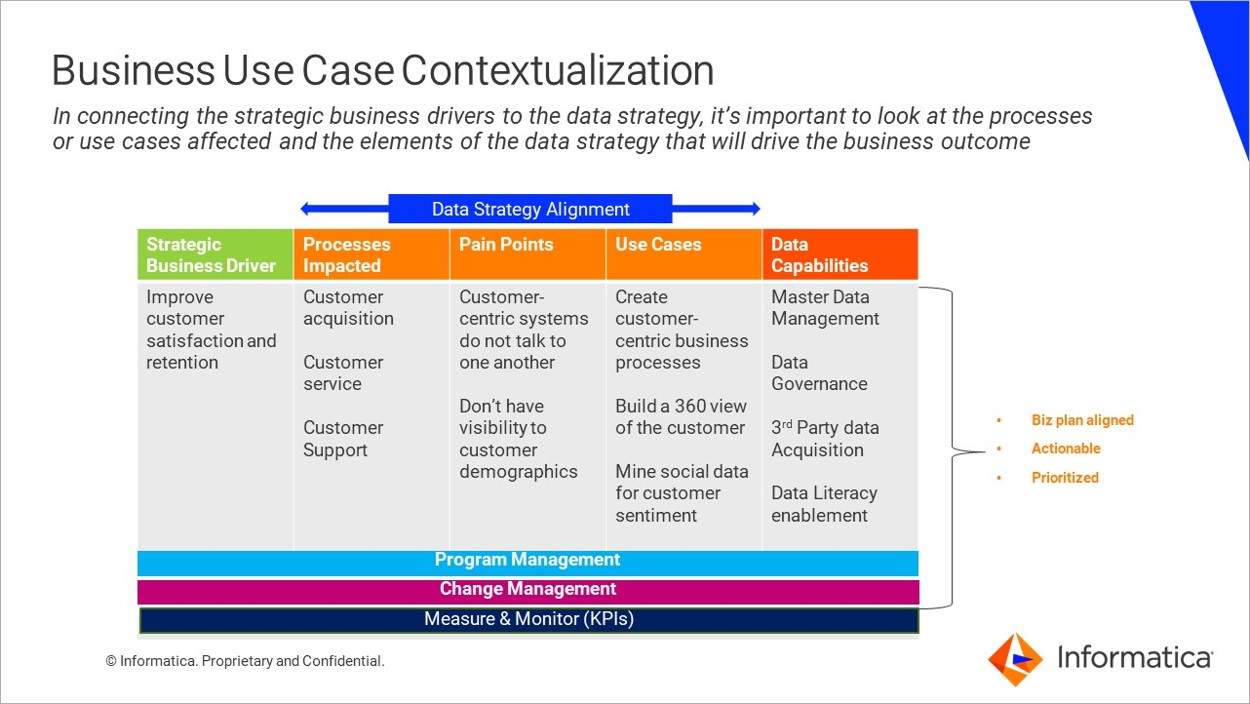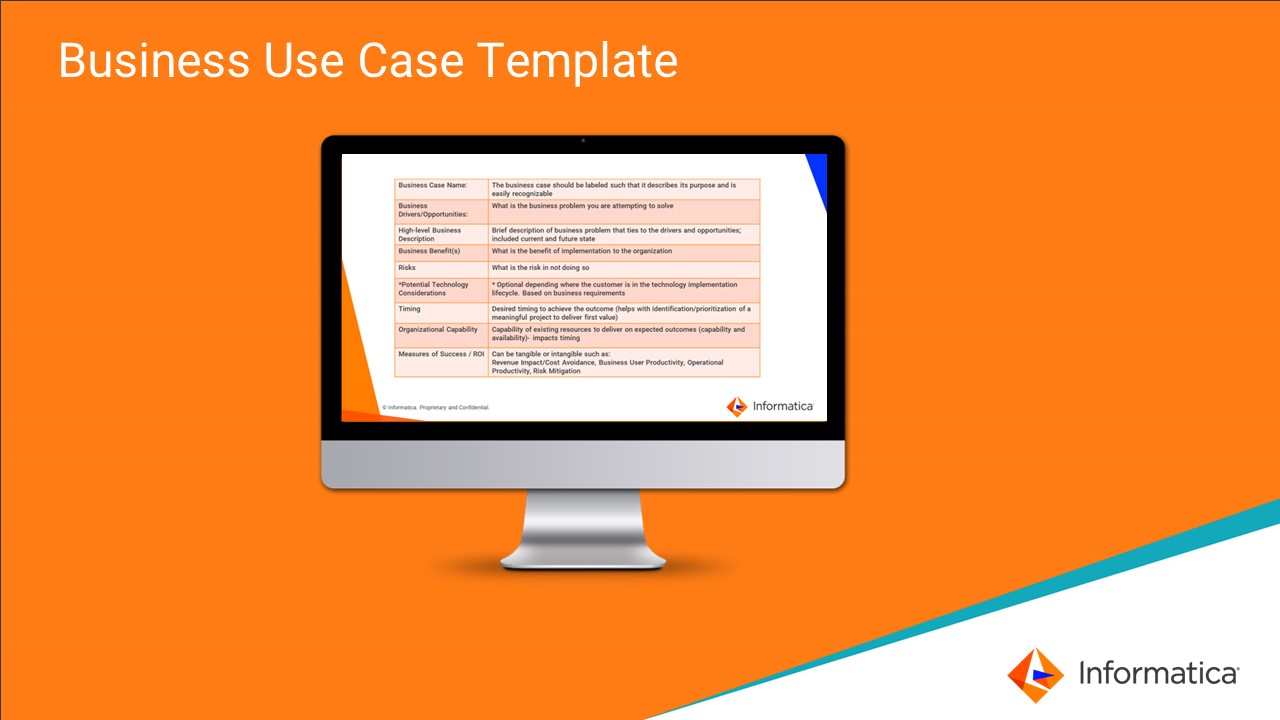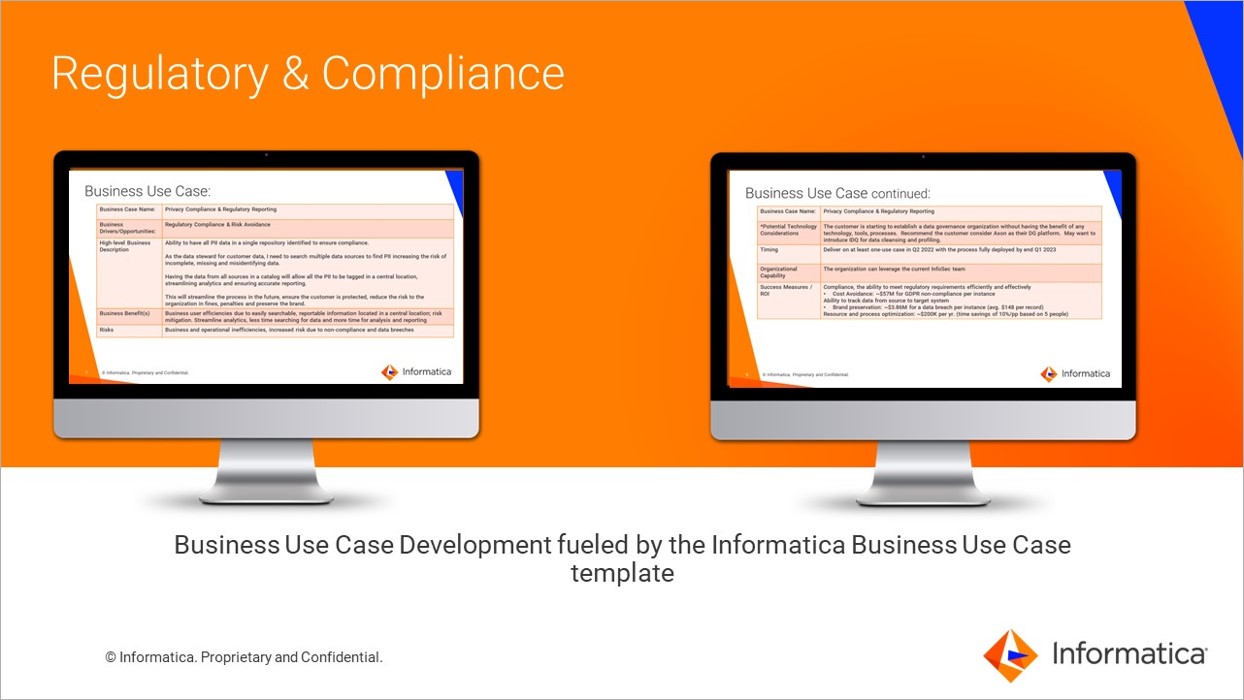What's Inside? How You Can Build a Successful Case for Data Governance

Ask five people for a definition of data governance and you will get six (or more) responses. “It is this OR it can be that…” As the individual accountable for data governance within your organization, once you get that all sorted, the leadership team will usually ask about a tangible Return on Investment (ROI). This is the time where you may begin to question your choice of career. If the organization has already made an investment in technology, you may only have one chance to demonstrate the value to ensure adequate annual funding.
There is no denying data is a valuable organizational asset. It is the key to business development and organizational success. If an organization is not analyzing data to enhance business processes, uncover customer insights and identify competitive opportunities, they have almost no chance to remain competitive.
One of the biggest challenges to data governance is gaining buy in. And when we say, “buy in,” we mean not just getting approval from the executive team but gaining support from functional teams across your organization.
Successful data governance requires participation from individuals across every department – from sales and marketing to IT and operations. Everyone must contribute to make governance successful and maximize the value of your data.
The best way to encourage program participation? Tie your governance program to strategic initiatives. Governance requires business-driven and quality-focused strategies to achieve business objectives and deliver ROI.
The good news is there is a straightforward solution, a prioritized list of business-driven, well crafted, use cases that balance complexity with time to value.
“Coming together is a beginning, staying together is progress, and working together is success”
~ Henry Ford
Use cases are imperative to gain alignment and broad buy in for business-facing applications.
The silver lining? You are not in this alone. And I mean that: doing this alone is a bad idea. Defining use cases is about collaboration, building advocacy and presenting the needs of the organization. It is a straightforward process. Let us explore this in the sections below.
The Basics
A compelling business use case outlines why data governance is a top priority and addresses the challenges facing your organization. For example, your organization might be facing a slew of regulatory hurdles. Your use case should outline how governance will streamline regulatory reporting for the compliance team and eliminate costly regulatory penalties.
Here is another common challenge: your company is struggling to centralize data from disparate data systems. Here, your business case will cover how governance helps ensure confidence in investments that will help your organization consolidate systems or migrate to a cloud environment.
Now, if the team is spending more time fixing data quality issues than running analytics, your business case would focus on how governance proactively helps solve data quality issues for the most impactful data.1
Optimally, an organization will identify between three and five prioritized use cases. Any more than that, your data strategy will become cluttered and unrealistic. Other examples of common categories of use cases include:
- Delivering a more customized customer experience
- Driving revenue growth
- Cost and pricing optimization
- Better prediction (enhanced analytics)
- Operational efficiencies
On the surface, these seem intuitive and underwhelming; it is the detail associated with each that supplies the context and criticality to your organization.
Begin with the End in Mind… Target Deliverables
Unsure about where or how to start? Let us break it down into consumable, executable components.
Provide a Framework for Discussion
Prior to setting up a working session you should plan to provide a framework to the attendees, allowing them to prepare. What does “develop a list of prioritized use cases” really mean? Below we’ve included an example of a way to contextualize the concept along with a set of “thought-starter” questions that you can distribute prior to the brainstorming session.
Use Case Development Thought Starters
- If you could have one thing or change one thing with our data capabilities, what would that be?
- What are your team’s primary goals over the next 12 – 18 months?
- Where do you think improved data could have the biggest benefit
- To your area/function?
- To the company?
- What are the primary KPIs that your team uses to measure performance?
- What are some key pain points related to your specific role?
- Collection?
- Management?
- Availability?
- Transparency?
- Quality?
- Accessibility?
- Something else?
- What use case would you like the team to consider for a pilot?
- Who are your primary data consumers?
- What are your measures of success for this initiative?

Now that you’ve set the stage, the team can move forward with a productive session. Following is an easy-to-use template. Please note, while technology is important as an enabler, it should not be the primary focus during the development process.

Key Components of a Data Governance Use Case
- Link to a strategic objective
Linking the use case to a strategic objective will reinforce its importance. - Business driver/opportunities
Define the business problem you are trying to solve. - High-level business description
Brief but thorough description of business problem that ties to the drivers and opportunities. - Business benefit
Define the business value to the organization. - Risk
Define (and quantify if possible), the risks associated with not doing the identified use case. - Potential technology considerations
The content of this section will vary depending on the technology chosen and implementation lifecycle. Additionally, the use case can strengthen the argument for investment in new or upgraded technology. - Timing
Desired timing to achieve the outcome. Helps in the prioritization discussion of balancing complexity with value. One of the biggest challenges is finding the balance between the two. - Organizational capability
The capability of existing resources to deliver on expected outcomes, along with availability, may affect the timing. A well-defined use case without the necessary capabilities to execute is analogous to not having a use case at all. Change management, upskilling and re-skilling is an integral part of implementation. - Measures of success (ROI)
Define what success looks like for the use case, and how you plan to measure progress.
Leveraging the regulatory compliance example above, let’s walk through an example.

- Link to a strategic objective
Privacy compliance and regulatory reporting - Business drivers / opportunities
Risk avoidance due to fines and penalties resulting from non-compliance - High-level business description
Ability to have all Personal Identifiable Information (PII) in a single repository tagged as such to ensure compliance and simplify reporting.
“As the data steward for customer data, I need to search multiple data sources to find all the PII increasing the risk of incomplete, missing, and misidentifying data.” - Business benefits
Having the metadata from multiple sources in a central location (catalog), streamlines analytics and ensures accurate reporting. It eliminates the risk of fines and penalties to the organization and preserves the brand’s reputation. It also gains business user efficiency thanks to easily searchable, reportable information. Finally, streamlined analytics mean less time searching for data and more time for analysis and reporting. - Risks
Increased risk of non-compliance and data breaches. Risk of fines, penalties, and diminished brand reputation. Business and operational inefficiencies. - Potential technology considerations
To be successful, there is a need for an enterprise business glossary, data dictionary, metadata repository (data catalog) and automated data cleansing. Currently all these processes are manual; Technological enablement is required. - Timing
The organization needs to identify initial data sets and attributes to govern. The goal is to deliver on a minimum of one use case within six to nine months with a fully deployed data governance process by Q2 of the following year. - Organizational capability
The organization has individuals working in data governance roles, need to formalize and engage these people in the process. Additionally, leverage the existing InfoSec team. - Measures of success (ROI)
- Compliance, the ability to meet regulatory requirements efficiently and effectively
- Cost Avoidance: ~$57M for GDPR non-compliance
- Ability to track data from source to target system
- Brand preservation: ~ $3.86M for a data breach per instance (avg. $148 per record)
- Resource and process optimization ~$200K per year (time savings of 10% pp based on 5 people)
This Could Be Big
There is no getting around it: executing the first use case in your data governance program is going to be big. You’re breaking new ground, forming new relationships and challenging what has gone before. You’ll be transforming the way your business works. Transformation requires energy and perseverance. Once you demonstrate the value of data governance to the rest of your business, you can start rolling it out across the enterprise. You’re about to start down the road to better quality data, more efficient processes and data-driven transformation. For more information, download The Informatica Data Governance Program Workbook. You can learn more about the assistance we can provide in our Services Catalog.
References:
1Precisely: https://www.precisely.com/blog/datagovernance/building-a-business-case-for-data-governance-heres-how








